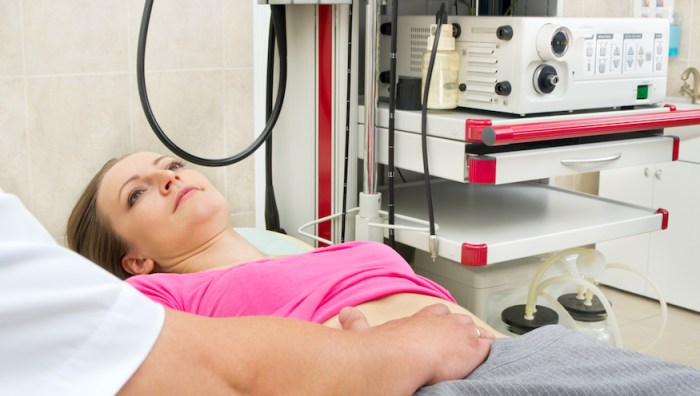Angelina Jolie made headlines on Monday with news that she had elected to remove her ovaries as a preventative measure against developing ovarian cancer. In 2013 the actress underwent a double mastectomy. The actress wrote op-eds for both surgeries explaining she elected the procedures because she had a high risk of developing both cancers. We spoke with Dr. Lisa M Sclafani, director of surgical services at Memorial Sloan Kettering Cancer Center, to get better insight about the procedure: what it involves, who should get it, and what the risks are.
What can you tell us about why Angelina Jolie had this procedure?
I see patients like Angelina Jolie because she has inherited the BRCA gene. Her last operation, as everyone knows, was to remove her breast to prevent breast cancer. What she’s reported now is that she’s removed her ovaries because those patients who have the BRCA mutation have a high risk for developing ovarian cancer. It is a very common thing to do for patents in her situation. The operation is a way to prevent ovarian cancer by removing the ovaries before you get cancer. Although [the surgery] doesn’t completely reduce your risks to zero percent. Patients who get this operation can still get a form of ovarian cancer called primary peritoneal carcinoma. What are the chances of getting Ovarian cancer with the BRCA gene?
For breast cancer it’s quite high. [The] chances of getting ovarian cancer are usually estimated to be forty to sixty percent. We see a lot of women do this because ovarian cancer is very deadly. Also, almost everyone who gets ovarian cancer is diagnosed at an advanced stage and needs chemotherapy. That’s in contrast to breast cancer, where we can do surveillance on patients and often pick it up early before they need chemotherapy. It’s very difficult to screen for ovarian cancer. What make it so difficult to test for?
It’s difficult because the symptoms can be very vague and it can become very advanced before the patient has symptoms. The typical screening tests that I believe Ms. Jolie had include ultrasound as well as blood tests — but they’re not great tests for picking up early ovarian cancer. It’s almost impossible to detect ovarian cancer early. What is the fatality rate of ovarian cancer?
According to the American Cancer Society: Stage three ovarian cancer, five year survival is 39 percent and for stage four it’s 17 percent. For stage one it’s 90 percent and stage two it’s 70 percent — it’s just that we hardly detect it at those stages. What should women be aware of when it comes to this procedure?
What you have to consider is that the benefit of the operation is you can greatly reduce your risk of getting ovarian cancer. Since ovarian cancer is so deadly, we imagine that it would reduce your risk of dying from ovarian cancer. You could continue to do those same tests you did before, but there’s no proof that they can actually detect cancer early. Once you’ve had your ovaries removed your risk is very low it’s probably less than what it would be for an average individual to get ovarian cancer. Whether those testings should be done routinely is very debatable. Is there anything you would like our readers to know about this procedure?
The procedure is fairly low-risk. It’s an outpatient surgery usually, and it has a low complication rate. The long-term consequences are what people are really concerned about. Early menopause can bring on a lot of symptoms: hot flashes, and things like premature osteoporosis.
The downside of the getting the operation? The risks from the surgery, which are fairly low, but more importantly the side-effects of going through menopause at a very early age. The average age for menopause now is about fifty-two, and she’s thirty-nine, so when you take away ovaries you put the patient into early menopause. [Jolie] decided to take hormone supplements, it’s called hormone replacement therapy, and it’s a completely reasonable thing to do when you go through an early menopause.
Why Angelina Jolie chose to remove her ovaries

Getty
























